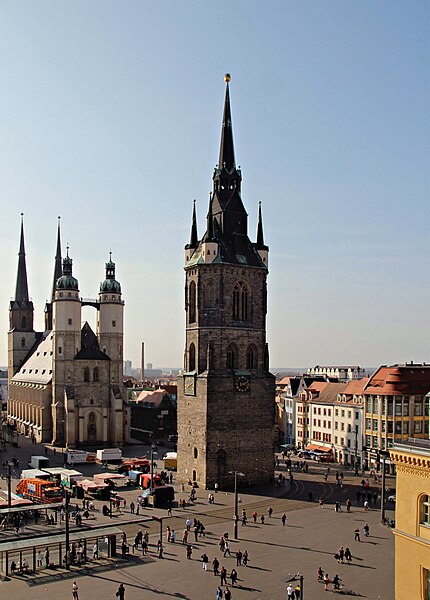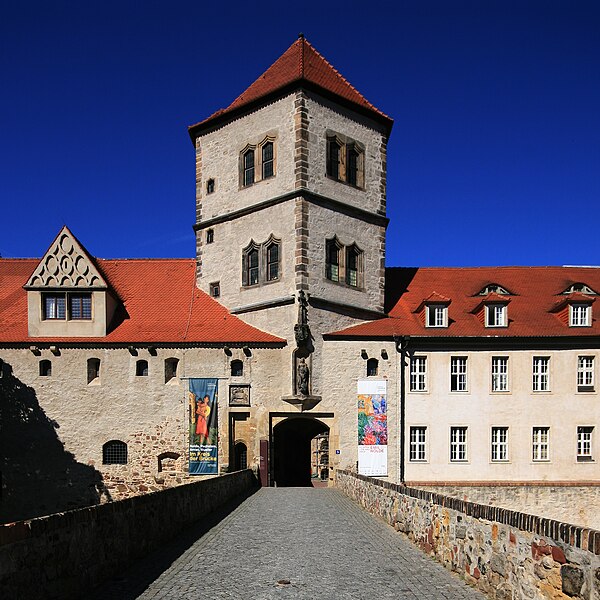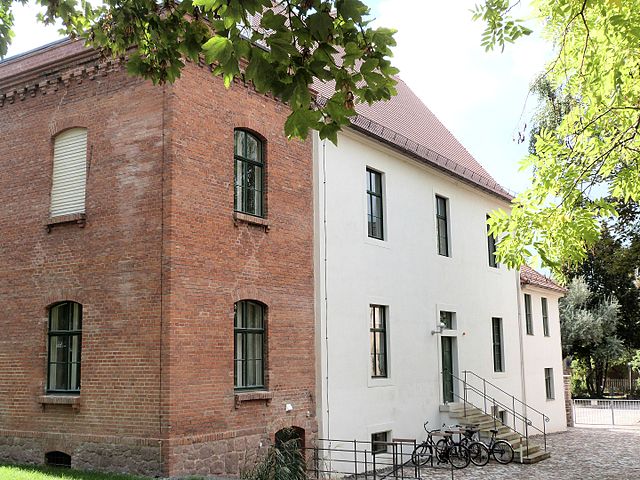Halle-Neustadt, popularly known as HaNeu, was a city in the German Democratic Republic. It was established as a new town on 12 May 1967, as an independent and autonomous city. The population in 1972 was 51,600 and in 1981 was more than 93,000. On 6 May 1990, Halle-Neustadt merged back into Halle again. The population has halved since then and was about 45,157 inhabitants on 31 December 2010. Halle Neustadt has been praised for being "sustainable" as a result of its urban planning, which includes high density living, a tram line serving the central corridor and the regional suburban rail system (S-Bahn).
Halle-Neustadt in 1982
The rail link to Leuna and Buna, Halle-Neustadt railway station, now Zscherben street (Zscherbener Straße) in 1967
Halle-Silberhöhe Poliklinik.
The Elan der frühen Jahre: „Aufbauhelfer“ (Elan of the early years: "reconstruction workers") (1975) by Rudolf Hilscher.
Halle (Saale), or simply Halle (German: [ˈhalə]; from the 15th to the 17th century: Hall in Sachsen; until the beginning of the 20th century: Halle an der Saale ; from 1965 to 1995: Halle/Saale) is the largest city of the German state of Saxony-Anhalt, the fifth most populous city in the area of former East Germany after (East) Berlin, Leipzig, Dresden and Chemnitz as well as the 31st largest city of Germany, and with around 244,000 inhabitants, it is slightly more populous than the state capital of Magdeburg. Together with Leipzig, the largest city of Saxony, Halle forms the polycentric Leipzig-Halle conurbation. Between the two cities, in Schkeuditz, lies Leipzig/Halle International Airport. The Leipzig-Halle conurbation is at the heart of the larger Central German Metropolitan Region.
Image: 2012 03 Halle 02 Marktplatz (1)
Image: Moritzburg, Burgtor als Hauptzugang
Image: Halle Neustadt Urban District Centre
Image: H51 Francke Krankenhaus Seelsorge








